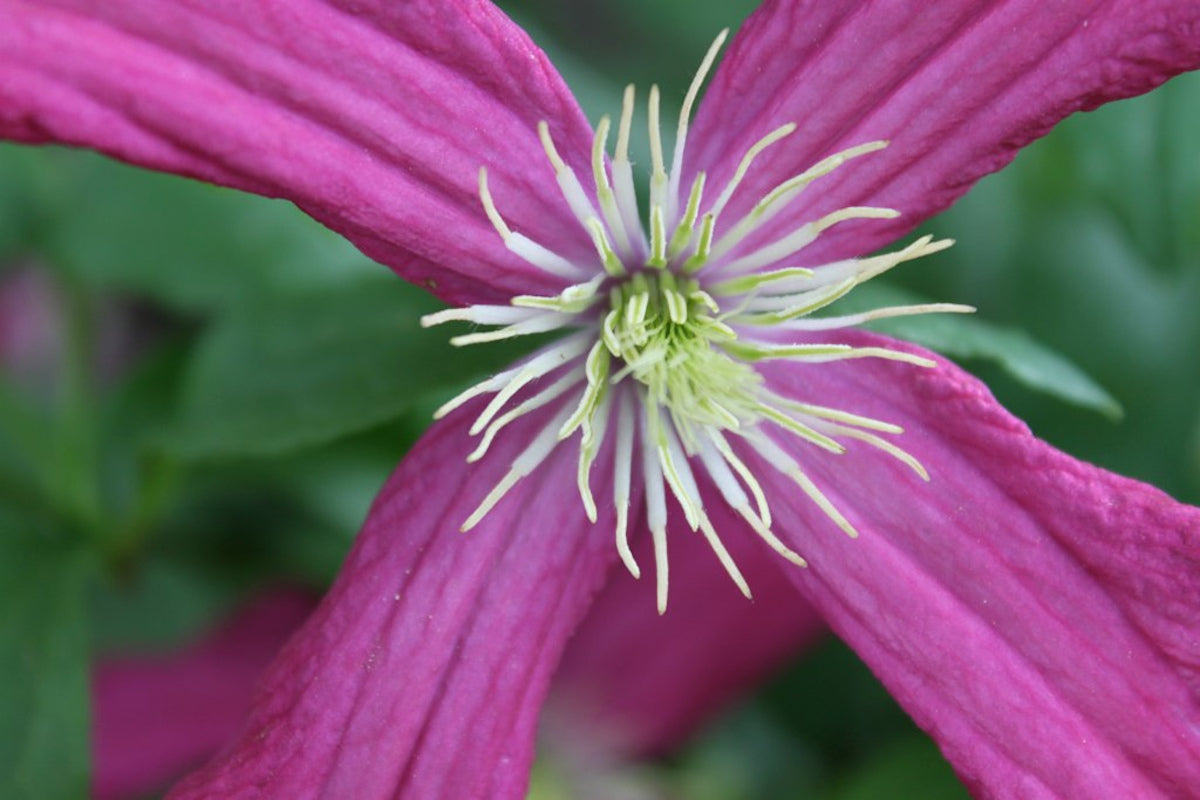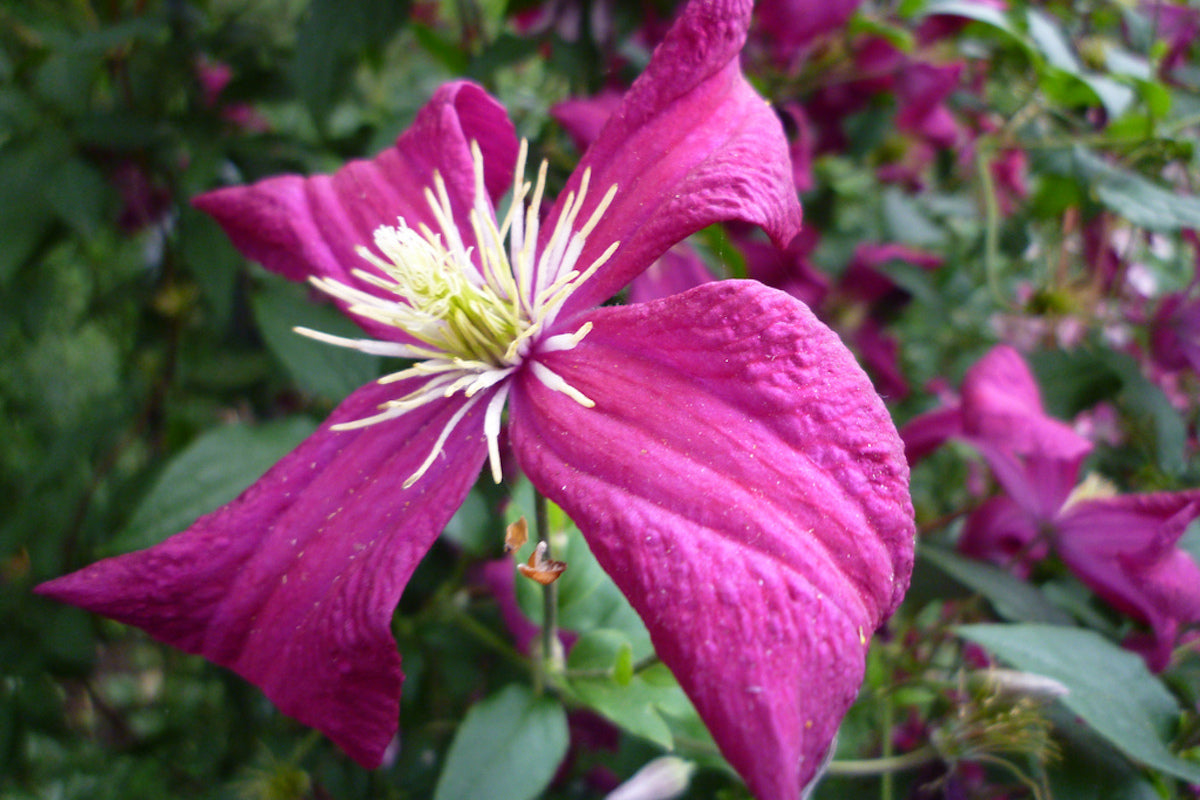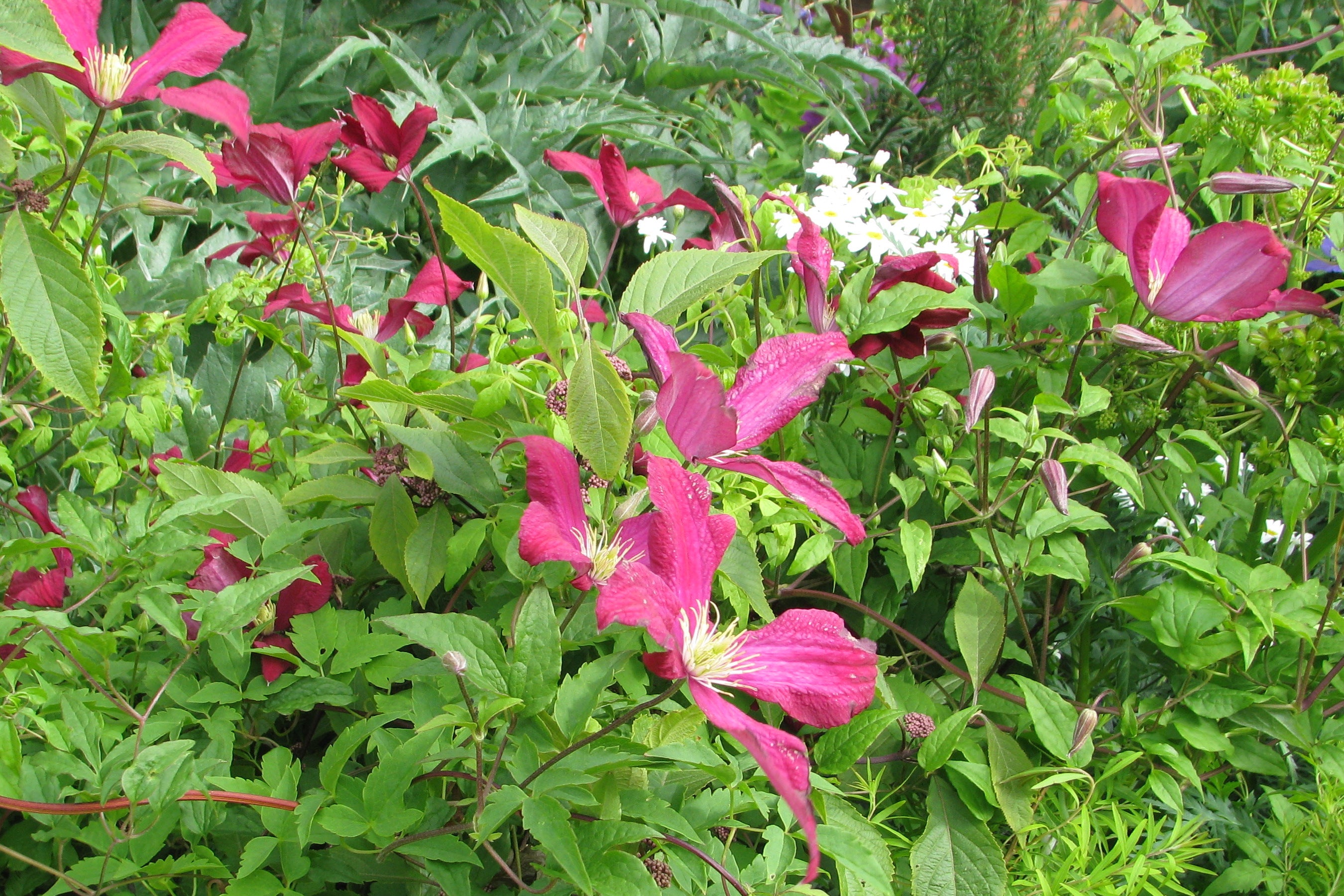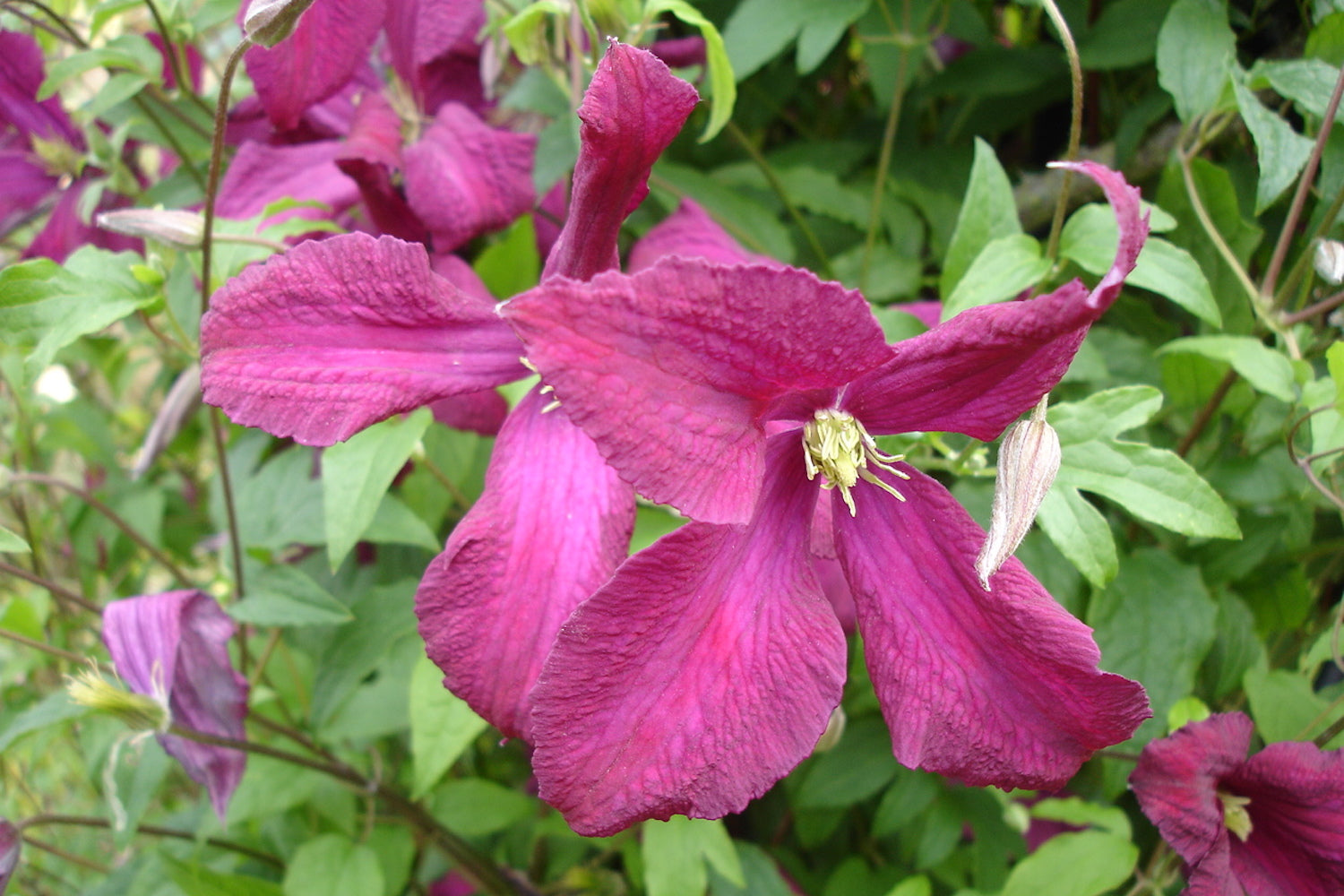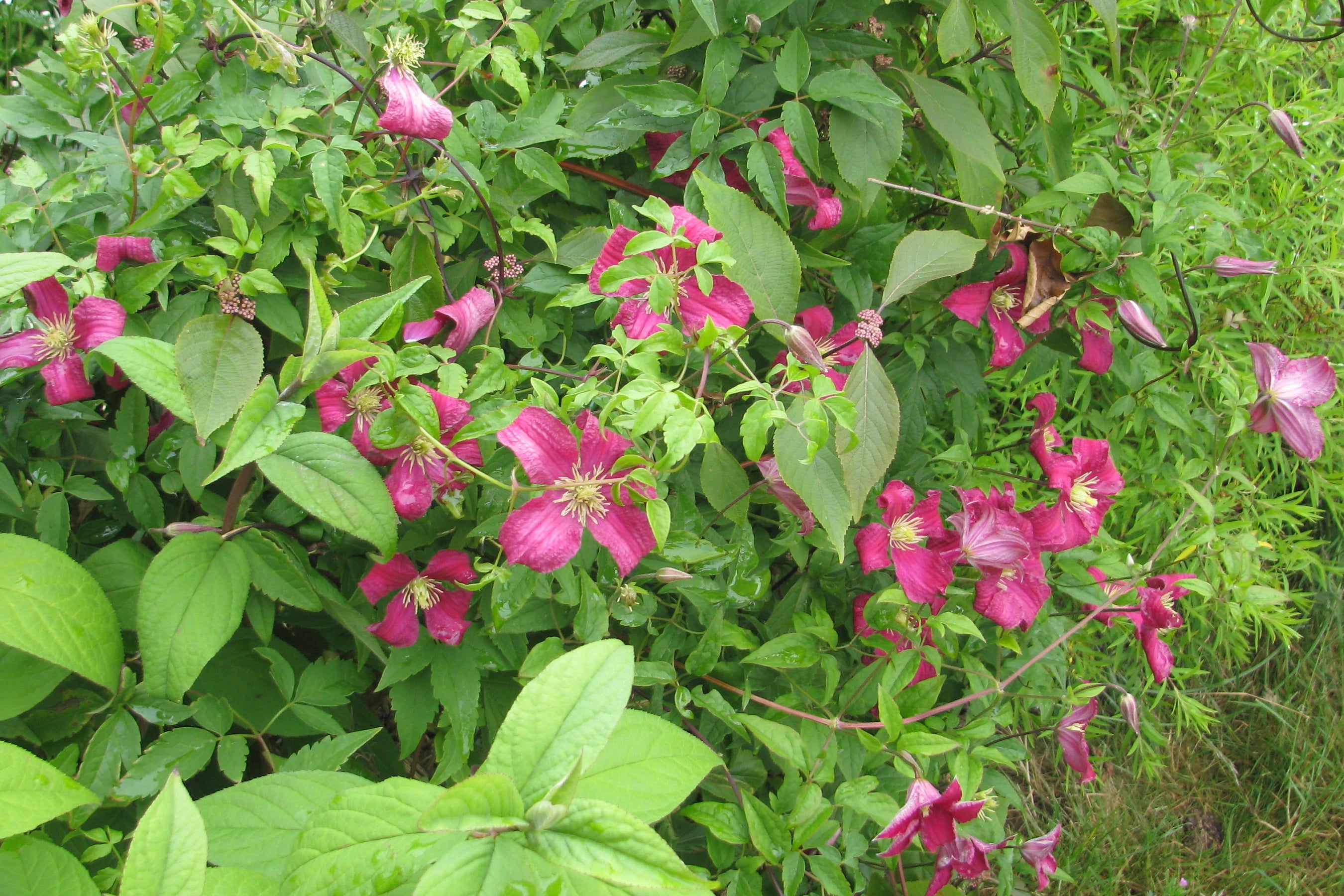Clematis 'Madame Julia Correvon' (Vt)
Approx. 0.5 litre pot
About this cultivar:
Clematis 'Madame Julia Correvon' is one of the most instantly recognizable of viticella cultivars, first because of the unusually strong, bright red of its flowers, and second because of a quirk in the way the tepals age - some will develop a recurve or a twist. So the flower might not draw top marks for symmetry, but a texture that makes it seem very active and full of life. It is no wonder that this is a steadily popular clematis.
The plant was introduced in 1900 by Francisque Morel, a truly pivotal figure in the history of the viticella cultivars, who derived it from a cross of Clematis viticella 'Rubra grandiflora' with Clematis 'Ville de Lyon' but it was lost to the trade sometime during the decade of the First World War, and when it reappeared years later it was as Clematis 'Jules Correvon,' though no one seems ever to have heard of a Jules in the prominent nursery family of Correvon. Apparently it was restored to the English market from a single specimen at Hidcote Manor, and went on from its sinking spell to get its correct name back around 1972 and spread gradually into nearly every corner of the trade.
The species, Clematis viticella, the Italian leather flower or 'Virgin's bower', is native to Europe. The climber was the first clematis imported into English gardens, first reported grown in 1569 by Hugh Morgan, apothecary to Elizabeth I of England. The epithet means 'Little vine'. The great attraction of the viticellas is their freedom from "troubles" and their adaptability to many different garden uses. Container growth is even a possibility but the container had better not be small. Trellises, fences, pillars, arbors, all are feasible supports, but more and more gardeners seem to enjoy the imaginative challenge of combining plants like this one with hosts or companions in the landscape—small trees, big open shrubs, and perhaps most of all, roses.
OK, if you want to prune at all, the standard procedure is to hard-prune it at some time between the close of bloom in the autumn and the first signs of new growth in the Spring. Most of the time that will keep it flowering well. But sometimes there may be a good reason to do otherwise. What if the goal is simply to let the vine grow as much as it can?!?!? Or to relax and let Madame Julia Correvon do her own thing!!?
- Position: Full sun, partial shade
- Soil: Almost any soil, grows well in Ballyrobert
- Flowers: July, August, September
- Other features: Grows well in Ballyrobert, Royal Horticultural Society Award of Garden Merit (RHS AGM)
- Hardiness: H6 - Hardy in all of UK and northern Europe (-20 to -15°C), Fully hardy - grows well in Ballyrobert!
- Habit: Climbing
- Foliage: Deciduous
- Height: 200 - 400 cm (6.5 - 12.5 ft) can prune smaller
- Spread: 100 - 200 cm (3.5 - 6.5 ft)
- Time to full growth: 2 to 5 years
- Plant type: Herbaceous Perennial, climber
- Colour: Purple, green
-
Goes well with: Drainpipes, roses, trees, walls, anything they can climb; even other clematis
About this genus:
Clematis, is one of our favorite genus. But not just ours. William Robinson (1838-1935) said about them ‘As hardy as the British Oak…I believe them to be the finest of all hardy flowers and wish them a pleasant time with their admirers.’ Christopher Lloyd (1921-2006) even started a specialty Clematis nursery within his famous garden at Great Dixter.
Clematis (meaning"a climbing plant" in ancient Greek) is a genus of about 300 species within the buttercup family (Ranunculaceae). Their garden hybrids have been popular among gardeners, beginning with Clematis × jackmanii, a garden standby since 1862. Most species are known as clematis in English, while some are also known as traveller's joy, (a name invented for the sole British native, C. vitalba, by the herbalist John Gerard), virgin's bower, old man's beard, leather flower or vase vine.
Clematis are mainly found throughout the temperate regions of the Northern Hemisphere, rarely in the tropics. The wild Clematis species native to China made their way into Japanese gardens by the 17th century. Japanese garden selections were the first exotic clematises to reach European gardens, in the 18th century.
The climbing varieties are valued for their ability to scramble up walls, fences, and other structures, and also to grow through other plants, such as shrubs and trees. Some can be trained along the ground to provide cover. Because of their adaptability and masses of spectacular flowers, clematis are among the most popular of all garden plants. Because different cultivars flower during different seasons it is, in theory, possible to have a clematis in flower at any time throughout the year.
They will grow in almost any garden soils and situations, many can be grown in containers. They are a great plant for any garden - don't believe they are for informal gardens only. We grow them almost everywhere in Ballyrobert. Try them with drainpipes, shrubs, roses, trees, anything they can climb;even other clematis.
Much confusion surrounds Clematis pruning. We say - don't worry. As mentioned above, Christopher Lloyd had a specialty Clematis nursery. Here is a I-think-relevant 1969 quote of his "[The] gardener’s eternally repeated question “When should I?” and “What’s the best time to?”, I've concluded that nine times out of ten the answer is “When you’re thinking about it; when you’re in the mood.”" Amen to that.

